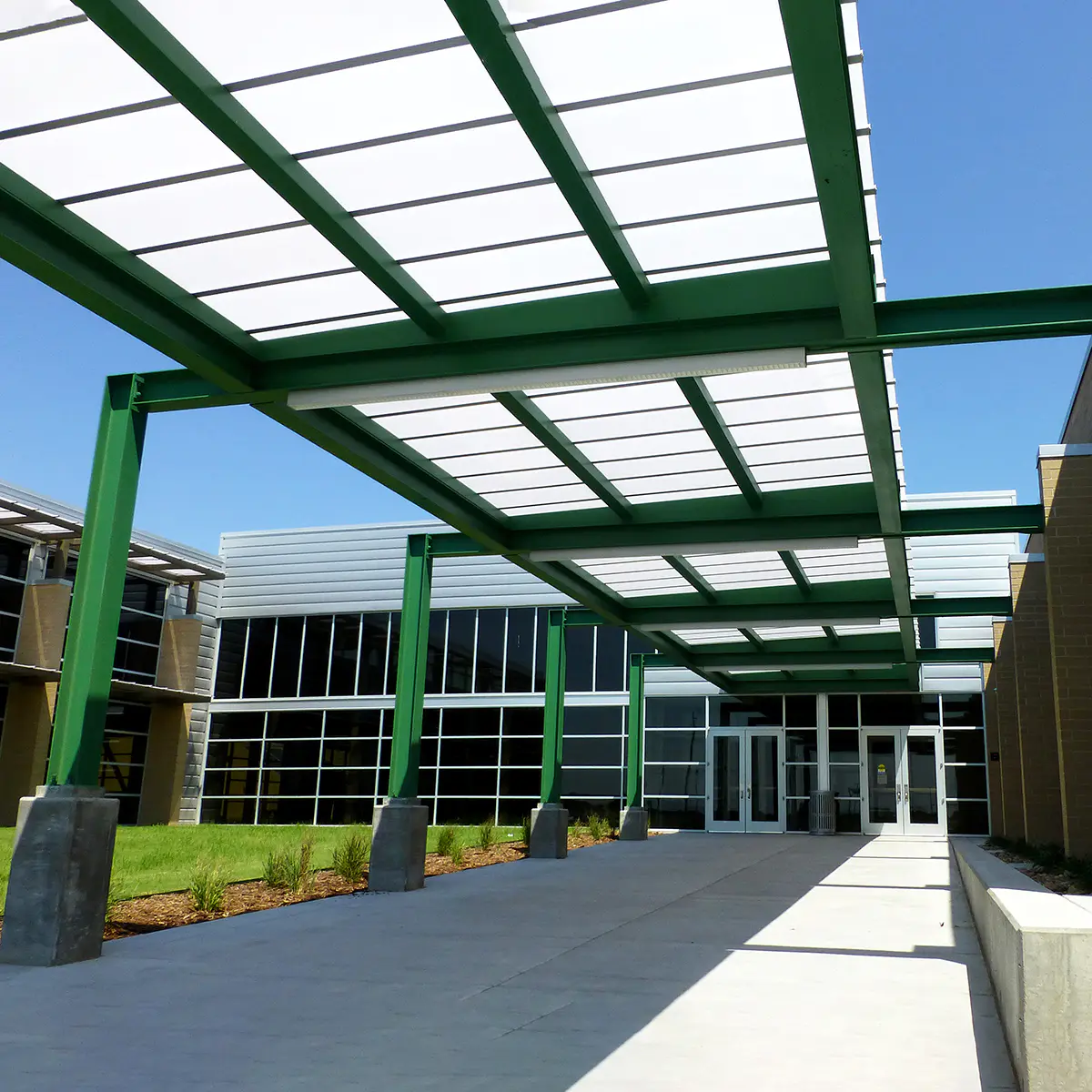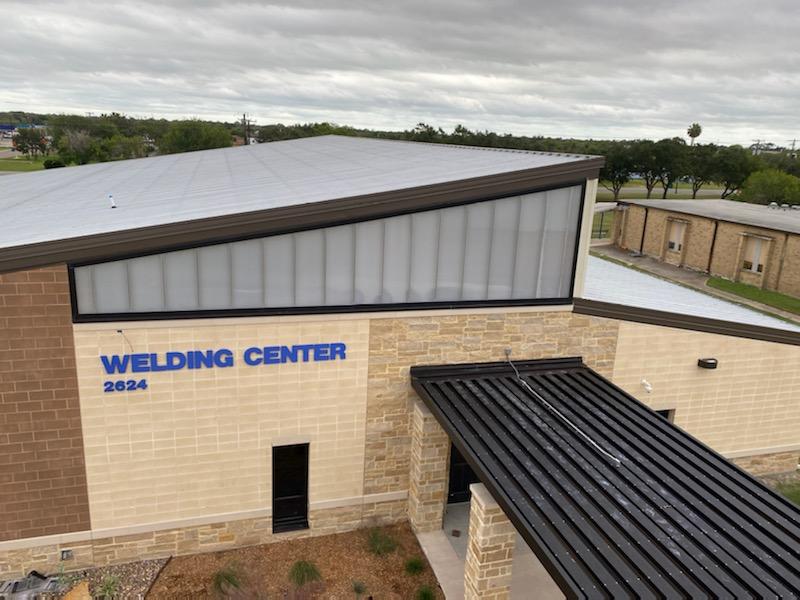Polycarbonate Glazing
Polycarbonate glazing provides the beauty of natural daylight yet is more cost-effective.
A Game Changer for Architecture
The word “polycarbonate” might make you think of industrial-looking buildings with poorly distributed light diffusion. But recent technologies have revolutionized this type of glazing, resulting in a desirable and customizable option for architectural projects.
Polycarbonate is a strong, lightweight plastic material that has many uses in architecture and construction. It is known for its durability and transparency and is often used as a substitute for glass in building projects. Some of the key advantages of using polycarbonate in construction include its resistance to impact, UV radiation blocking, and extreme temperatures, as well as its ease of shaping and installation.
In recent years, advances in technology have made it possible to produce polycarbonate with improved properties, such as increased fire resistance and improved insulation. These developments have made polycarbonate an increasingly popular material for use in a wide range of construction projects, from windows and skylights to walls and even large airplane hangar doors.



A few uses for polycarbonate products include:
- Using polycarbonate sheets as roofing material for a greenhouse or conservatory to allow sunlight to pass through while providing protection from the elements.
- Using polycarbonate panels as skylights in a commercial building provides natural light and reduces energy costs.
- Incorporating polycarbonate into the design of a transparent wall or partition to create a unique and modern aesthetic.
- Using polycarbonate sheets as a protective barrier for outdoor seating areas or balconies to provide shelter from the rain and wind.
- Using polycarbonate panels as a security barrier in a public building or as a protective shield for windows in high-risk areas.



